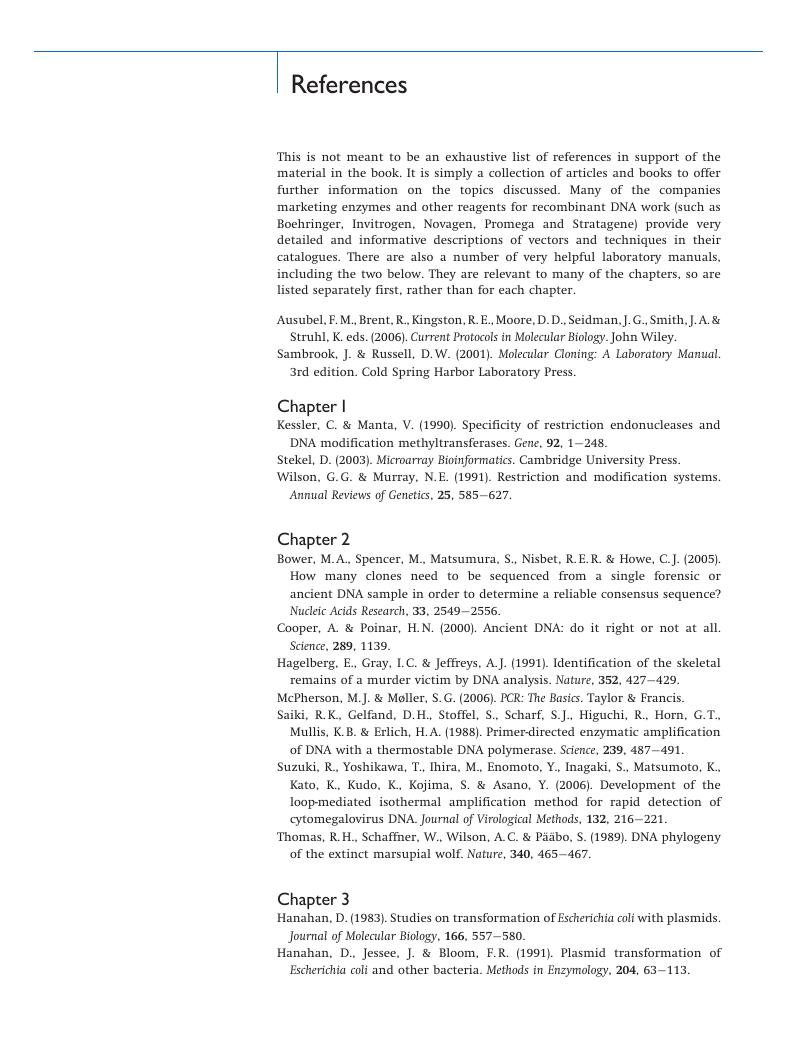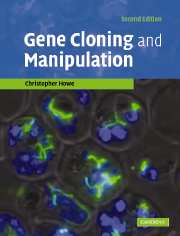Book contents
- Frontmatter
- Contents
- Preface to first edition
- Preface to second edition
- Chapter 1 The tools for the job
- Chapter 2 Polymerase chain reaction
- Chapter 3 Simple cloning
- Chapter 4 Other vector systems for E. coli
- Chapter 5 Making libraries
- Chapter 6 Screening libraries
- Chapter 7 Modification and mutagenesis
- Chapter 8 Use of cloned DNA
- Chapter 9 Using other organisms
- Chapter 10 Examples
- References
- Index
- References
- Frontmatter
- Contents
- Preface to first edition
- Preface to second edition
- Chapter 1 The tools for the job
- Chapter 2 Polymerase chain reaction
- Chapter 3 Simple cloning
- Chapter 4 Other vector systems for E. coli
- Chapter 5 Making libraries
- Chapter 6 Screening libraries
- Chapter 7 Modification and mutagenesis
- Chapter 8 Use of cloned DNA
- Chapter 9 Using other organisms
- Chapter 10 Examples
- References
- Index
- References
Summary

- Type
- Chapter
- Information
- Gene Cloning and Manipulation , pp. 250 - 256Publisher: Cambridge University PressPrint publication year: 2007



